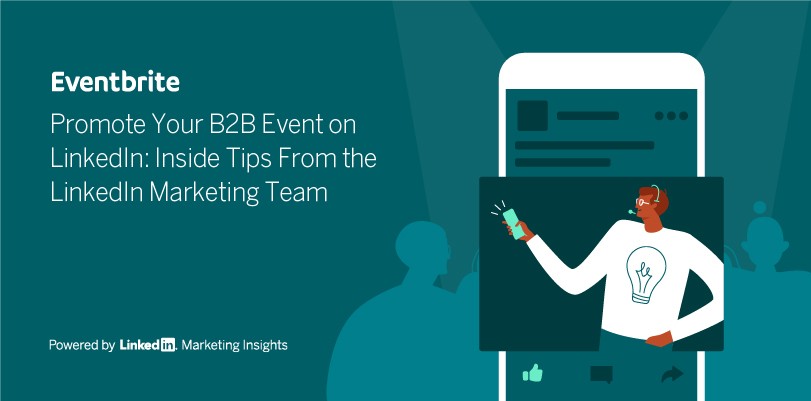How We Solve 3 Common B2B Event Marketing Challenges
You need to drive attendance to your B2B event — but they have to be the right people. If you’re targeting executives but draw in students or entry-level employees, it doesn’t just put your sales pipeline at risk — it also reflects poorly on you and your team. Conversely, if you’re looking to reach below-the-line practitioners and you only attract high-level thinkers, you’ve missed the mark too.
After all, if your event doesn’t generate the return on investment your business needs, you have to scramble to meet your goals. And even if you manage to fill the gap, management will remember the miss each time you report on results.
Don’t let that be you. In our new ebook with Eventbrite, we identify three of the most common B2B event marketing challenges, and share how our team solves them.
Challenge #1: Your events are poorly attended
You’ve convinced a handful of company executives, key customers, and top prospects to come to your event — but judging by attendance numbers a few weeks beforehand, it looks like they will be greeted by a half empty room. You’re pivoting to try to find a marketing angle that will boost attendance.
If you fail to fill seats (virtual or physical), the attendees who do show up will take notice. Even worse, people within the company — from the CEO to your sales team — will second guess your strategy.
How we solve it: You need to drive broad awareness to get as many people as possible interested in — and registering for — your event. When driving optimal registration for their own events, the LinkedIn team turns to Sponsored Content and Dynamic Ads.
“We see Sponsored Content as an awareness play,” says Cassandra Clark, a senior marketing manager of demand generation at LinkedIn. “It lets people know, ‘This is a LinkedIn marketing road show! We’re coming soon!’”
Then, once your audience’s interest is sparked, use Dynamic Ads to drive the registration.
“Dynamic Ads help viewers really imagine themselves at your event, hearing or meeting your speaker,” says LinkedIn’s Cassandra Clark. “It’s a new product that you can use to personalize the experience for your audience— so your message will really stand out.”
Challenge #2: Your existing database isn’t engaged
You have a healthy email list — but your bounce rates are high. Your database is full of outdated contact information or generic info@ addresses. People aren’t opening your emails, or, if they are, they aren’t clicking through. In short, your email efforts aren’t driving registrations.
The LinkedIn team recently faced this challenge for a webinar targeting executives. The C-suite target audience had such overflowing inboxes that the webinar invite email had a disappointing open rate. With so few registrations coming from email, The LinkedIn team was under pressure to find a creative way to fill the webinar.
How we solve it: The LinkedIn team used Sponsored InMail. The team targeted the same audience who didn’t open their email send, and achieved a 50% open rate on their Sponsored InMail campaign — and a healthy number of registrations.
“When our email invites weren't driving enough registration, Sponsored InMail saved the day.”
— Renee Lowe, Associate Demand Generation Manager, LinkedIn
Challenge #3: You have enough registrants — but they aren’t the right registrants
You’re driving registrations, but not with the type of leads that drive value for your business.
Maybe you want decision-makers and company influencers, but you’re seeing mostly entry-level employees registering for your B2B event. Or, you’re not getting representatives of the ABM (account-based marketing) target companies you specifically hope to attract. Either way, your event isn’t delivering enough value for your business.
How we solve it: “Targeting is what LinkedIn does best,” says LinkedIn’s Cassandra Clark. “We have the strongest set of data to get the right people to your event.”
For any ad you place on LinkedIn, you can target members by geographic area, company, titles, skills, and much more. Go broad or granular, from targeting anyone in an industry (like marketing), to targeting only those with a specific title (Marketing Director), to those with particular skills (email marketing). But be careful not to layer on too many targeting options: Hyper-targeting may prevent you from getting the volume of registrants you’re aiming for.
Solve these challenges in a new guide
To hit your goals and make sure your marketing spend is effective,you need to get the right people at your next event. And that's why you need to carefully target your marketing spend and audience on social media, especially on LinkedIn.
Learn from the experts in B2B events. We paired up with Eventbrite to write Promote Your B2B Event on LinkedIn: Inside Tips From the LinkedIn Team, a guide for B2B marketers who are tired of overspending their budgets to generate poor-quality leads. You’ll learn the strategies the LinkedIn marketing team uses to promote more than one in-person or digital event every week.




